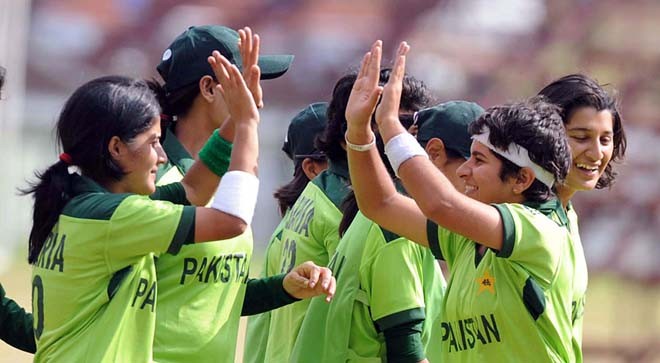

In the 1970s, Pakistan Television put on air a serial Qurbatain aur Faaslay. Safdar Mir, a respected intellectual and columnist, had dramatised the famous novel by Ivan Turgenev Fathers and Sons. The cast of the serial included some household names of our television, like Rahat Kazmi, Sahira Kazmi (then Sahira Ansari) and Shujaat Hashmi. The serial, which was an instant hit, opened up vistas of a discussion on relations between the old and new generations.
‘Generation gap’ thus became a hot topic in those days and was echoed in other TV shows and newspaper columns.
A few months later, PTV Islamabad Centre, then located in military barracks in the adjoining Chaklala Cantonment, sponsored a survey supervised by Professor Nasrullah Malik of Gordon College. Professor Nasrullah, now 84, was an apt choice, having authored many stage plays and a couple of PTV drama serials -- one of them Professor, which highlighted problems of the youth, being the most popular.
Using the well-known multiple-choice technique, the questionnaire probed youth behaviour towards love, parental authority and society. The findings of the survey were presented in a TV programme Zaivaey anchored by Rahat Kazmi.
The most astounding aspect of the conclusion was that although the youth in Pakistan had a markedly different perception of life, they, because of a real or perceived commitment to the traditional norms, social customs and family institutions, were not willing to revolt against the older generation.
By a coincidence, Raja Anwar now an advisor to the Sharif family was appointed by Zulfikar Ali Bhutto as his advisor on Youth Affairs. The book of Raja Anwar on the subject of love Jhootey Roop Kay Darshan was selling like hotcakes. One day Raja Anwar in his capacity as advisor went to see ZAB, who put a question to him: Why is it that students in Pakistan have a conservative outlook when they are at school or college, but they turn revolutionaries as soon as they complete their studies and enter the arena of practical life?
Evidently, Bhutto’s question was based on his observation that in the West the youth during their student life generally had a revolutionary approach, but adopted a broadly conformist outlook when they got employed. In those days the rightist Islami Jamiat-e-Talaba (IJT) was gaining ground in colleges and universities. Bhutto’s question was very much relevant. Only Raja Anwar can tell what his response to this highly poignant question was.
This brings us face-to-face with a collective social dilemma.
In Pakistan, it was not only in the 1970s that one found the youth inclined to the conservative values; if social media is an indicator, the essential traits of conservatism still persist in our young men and women. Liberal and radical writings statuses (to employ a modern cliché) elicit a few ‘likes’ or favourable comments, while observations representing a conservative approach elicit popular support.
A cursory look at the social media will bring to the fore popular support for issues that have an essentially conformist set of values as their focal point.
Naturally, members of the civil society -- and indeed all those with a liberal, secular and rational outlook on life -- are worried about the youth’s posturing. Some time back Ayesha Siddiqua, commenting on a survey conducted on students in the elite educational institutions, pointed out that a great majority of Pakistani youth, with a middle-class background, who got education in the so-called ‘hi-fi’ schools and colleges, was actively supporting conservative values.
One interpretation is that the support to a certain political thinking and philosophy has its roots in family background, regional ethos and the way a particular individual has been brought up. Interestingly enough, such archetypal behaviour may not reflect the under-currents of the social aspirations of our youth. So, do we have a barometer to gauge the direction and quantum of the overall social change?
On any working day in the 1980s, you could hardly see a girl, being on her own, even in a shopping store. Pakistan Hockey Association was finding it difficult to organise a training camp to raise a national women team. No doubt, there was stiff resistance to the very concept of women playing hockey or any other team sport. A powerful lobby had initiated a newspaper campaign to press for separate female institutions of general and professional education at all levels.
For our younger generation, it is difficult to imagine the difference between then and now? Now you can find women playing cricket and hockey nationally and internationally. Their matches are held in Race Course Park and Bagh-e-Jinnah in Lahore. You also find female staff serving in government institutions, commercial organisations and sales outlets. Happy couples openly enjoy each other’s company in parks and restaurants. At least in metropolitan cities, nobody is bothered and no one objects.
However, there are some exceptions. For instance, a private tv channel’s anchorperson, perhaps to increase her programme’s rating, ventured to adopt the role of Saudi Shurta, but was forced to retreat. There are occasional incidents involving policemen or government-employed private security guards, who sometimes try to harass couples. But, more often than not, these are criminally motivated actions.
If we agree that the society has undergone a change, then why is it that liberals are worried about the collective mindset of the youth and the course of social development? Perhaps, because, they themselves are living in the old world. They are attached to a conceptual framework that was the hallmark of the 1960s or 70s. They are not calculating the changes that occurred in the society in last 40 years. It is better to have eyes on cliff but flowers and mushrooms lying beside tracks may not be ignored!
An earlier version of this article incorrectly stated the name of 1970s drama serial as Qurbatain aur Faislay. The error is regretted.